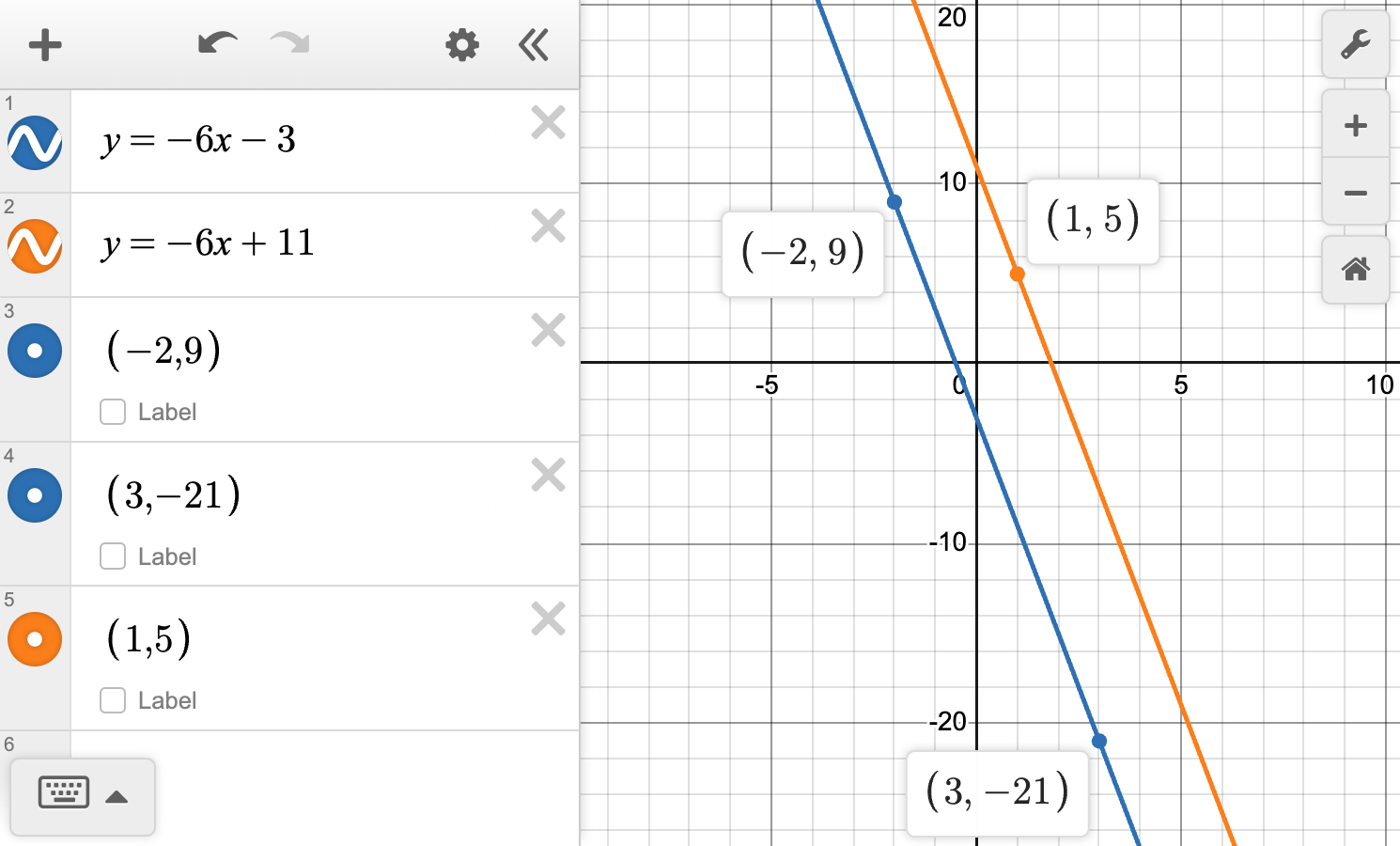11.03 Parallel and perpendicular lines
Parallel lines
Exploration
Move each of the blue points around. The points on the y-axis will move up and down, and the other point can move anywhere.
- What do you notice about the slopes of the two parallel lines?
- Do you think this is true for all non-vertical lines?
- How could we prove two lines are parallel?
Parallel lines will always have the same slope. This means they will never intersect. Any two vertical lines are parallel, just as any two horizontal lines are parallel.
We can use this theorem to prove lines are parallel and to find the equations of parallel lines.
Examples
Example 1
Prove that the lines are parallel.
Example 2
The line AB passes through the points \left(-2,9\right) and \left(3,-21\right).
Write the equation of the line.
Find the equation of the line that passes through \left(1,5\right) and is parallel to the line AB.
Example 3
Prove that two non-vertical lines are parallel if their slopes are the same.
If two lines are parallel, they have the same slope.
If two lines have the same slope, they are parallel.
Perpendicular lines
Exploration
Drag the blue points around. Keep the point on the red line in between the other two points for easier usability.
- What do you notice about the slopes of the two perpendicular lines?
- Do you think this is true for all non-vertical perpendicular lines?
- How could we prove two lines are perpendicular?
Perpendicular lines have slopes with opposite signs and they are reciprocals of one another. A vertical and horizontal line are perpendicular.
We may also call the slopes of perpendicular lines opposite reciprocals which refers to them being reciprocals with opposite signs. We use this theorem to prove lines are perpendicular and to find the equations of perpendicular lines.
Examples
Example 4
Consider the lines on the given coordinate plane.
Identify all pairs of parallel lines.
Identify all pairs of perpendicular lines.
Example 5
Consider the line 4x-3y=-6.
Find the equation of the line that is perpendicular to the given line and has the same y-intercept.
Write the equation in standard form.
Example 6
A mirror is placed along the x-axis. A laser beam is projected along the line y=-x+4 which reflects off the mirror.
A normal is a line which is perpendicular to the surface of the mirror at the point of reflection. Find the equation of the normal.
The angles that the laser and its reflection make with the normal will be congruent. If the angle between the laser beam and the normal is 45 \degree, find the equation of the path of the reflection.
Example 7
Prove that two non-vertical lines are perpendicular if the product of their slopes is -1.
The slopes of perpendicular lines are reciprocals with opposite signs. When multiplied together, they have a product of -1.
